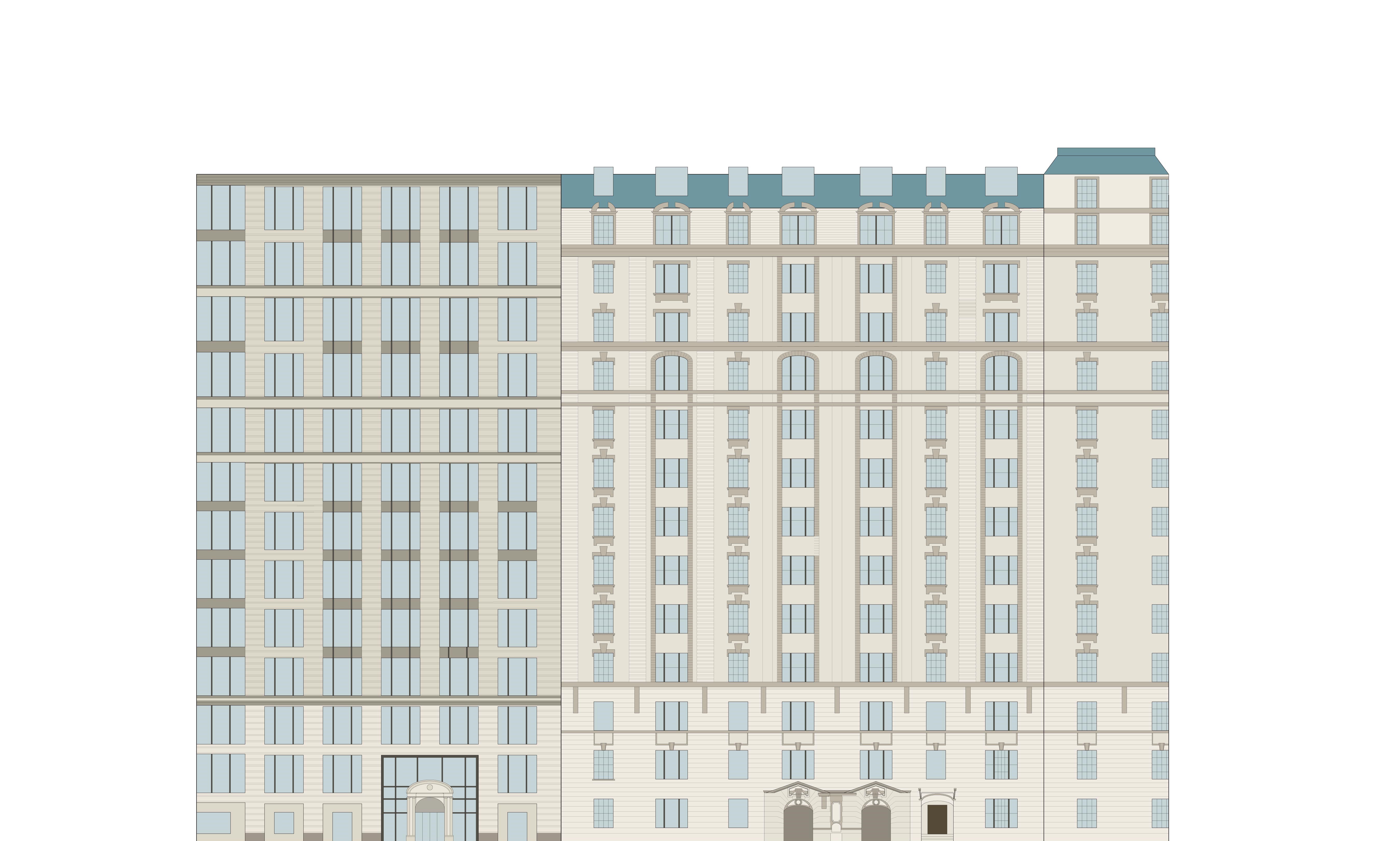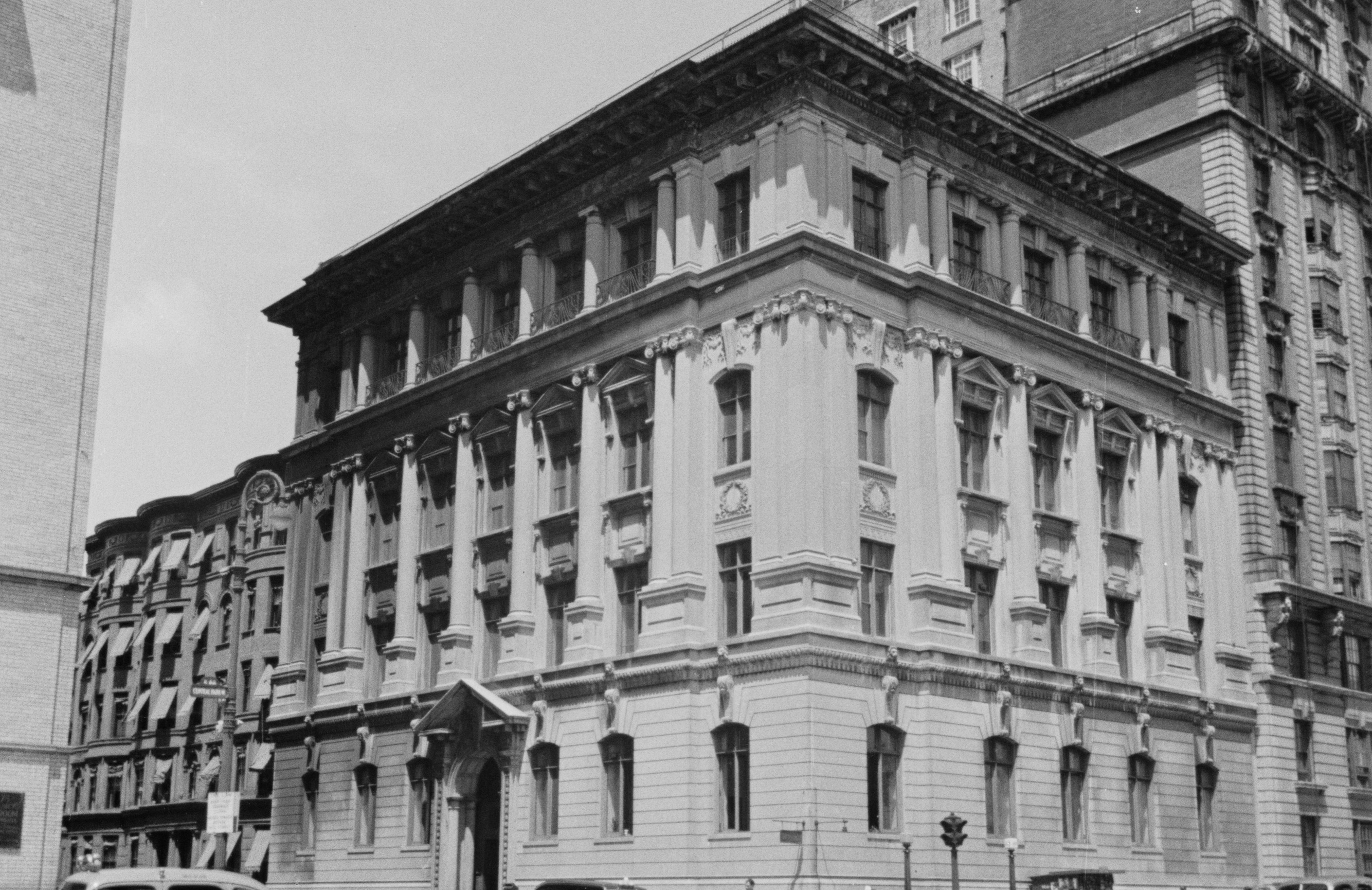
The Progress Club- 281-283 Central Park West
by Tom Miller
Membership in at least one—but preferably several—exclusive men’s clubs was expected of wealthy Manhattan gentlemen in the mid-19th century. The doors to those clubs, however, were closed to Jewish men, no matter how great their fortunes. In response, in 1864, the Progress Club was founded. Before long, according to The New York Times, “In Hebrew society the Progress Club has the same standing as the Metropolitan in other circles.”
At the turn of the last century, the Progress Club occupied a lavish clubhouse on Fifth Avenue at 63rd Street. Then, on November 9, 1901, the Record & Guide reported that the club had sold its Fifth Avenue property and purchased the northwest corner of Central Park West and 88th Street. The article said the club “will erect thereon a new clubhouse, which together with the land, for which they paid $135,000, will cost about $300,000.” The total outlay would translate to about $9 million in 2025.
Louis Korn won the competition for the design of the structure. In April 1902, he filed plans for “a four-story brick clubhouse.” The New-York Tribune reported,
The building will be of limestone, with a carved front. The entrance arch will be supported by allegorical figures, with bronze columns on either side of the entrance. In the basement will be a gymnasium and a rathskeller. On the first floor will be a women’s parlor and dining room, reading room and direction room. On the second floor will be a billiard room, with eight private dining rooms. The third floor will have a large card and chess room, with private dining room, and there will be a sun parlor and a roof garden.
On November 8, 1903, The New York Times reported, “the Progress—one of the most conservative of the Hebrew organizations in town, moved into its new home in Central Park West.” The article called the new building, “one of the most luxurious clubhouses in New York.”
The strict rules of decorum were not only observed but enforced within exclusive gentlemen’s clubs.
In the spring of 1906, the Progress Club and the Fidelio Club merged. The New-York Tribune remarked on May 11, “These two clubs…have among their members some of the most wealthy and influential Hebrews in this city.” The combined clubs retained the name of the Progress Club and continued in the Central Park West clubhouse.
The strict rules of decorum were not only observed but enforced within exclusive gentlemen’s clubs. A breach of deportment could result in serious consequences, as was the case in 1907 between Henry Ollesheimer, president of the Metropolitan Bank, and Edward Rothschild, of the manufacturing firm Rothschild, Meyers & Co.
One evening early that year, Rothchild was playing a game of cards. Ollesheimer passed the table and commented, “He is a crook. I don’t see how you can play with him or sit down at the same table with him.” He then accused Rothschild—before all the members in the room—of having won “a sum of money” by cheating. The New-York Tribune reported, “Some warm words followed and there was an altercation.”
In response, both members were censured by the board of governors. Considering himself innocent in the incident, Rothschild lobbied the board to force Ollesheimer to publicly retract his statement. The board took no further action and so Rothschild sued Ollesheimer for $100,000 (nearly $3.5 million today). His suit claimed the censure had caused him “disgrace and humiliation,” which led to “a complete physical breakdown, which might result in a permanent disease.”
The club installed a security system in the winter of 1920—one to which the neighbors may have objected. On December 20, The Evening World reported that A. M. Guinzberg, the vice-president, announced that the club would be installing, “one of the most novel methods thus far devised by private citizens to protect themselves against the onslaughts of thugs and gunmen.” Throughout the club, buttons would be installed within the floor. “If an invader enters, any member or attendant can step on one of these buttons.” That would activate “a huge electric gong” on the exterior corner of the building. “It can be heard by policemen within two blocks in the daytime and within five blocks at night, we estimate.” Guinzberg added, that even if a policeman did not hear the clanging, certainly residents “of the big apartment houses in this neighborhood” would.
In February 1921, the Progress Club staged a musical show. “It is called ‘Home Brew,’ and deals with the subject of which the club members know but little,” said The Evening World. The musical play poked fun of Prohibition.
The preservationists—and New York City in general—lost the fight.
In 1933, the club sold the property to The Walden School. Formerly known as The Children’s School, the private institution accepted boys and girls from kindergarten to junior high. The school changed the address from Central Park West to West 88th Street. On September 7, the New York Evening Post predicted, “The formidable task of turning the stuffy, ornate marble halls of what is now 1 West Eighty-eighth Street into the attractive, informal, very workable home [that] a progressive school needs would be such a splendid part of the students’ –and teachers’—life and work this year.”
A month later, on October 4, 1933, The New York Sun reported that opening of the fall term had been moved back to October 9. The delay, said the article, was due to “alterations to the school’s recently acquired new building.”
After operating from the magnificent limestone building for half a century, the Walden School proposed to replace it with a condominium tower in 1985. Community groups railed against the proposed loss of “one of the avenue’s finest neo-classical buildings,” as reported by The New York Times on November 12. The preservationists—and New York City in general—lost the fight. Louis Korn’s dignified structure was demolished in 1987 to make way for a 23-story apartment building and school.
Tom Miller is a social historian and blogger at daytoninmanhattan.blogspot.com
RETURN TO CENTRAL PARK WEST



